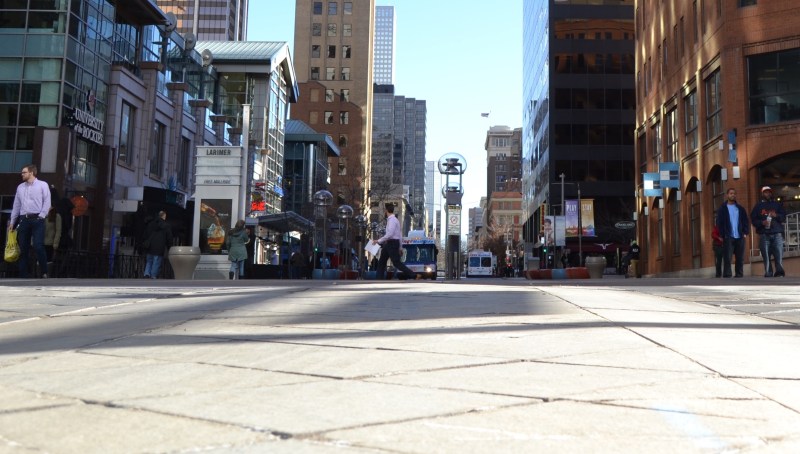The High Cost of Keeping Pretty, Pricey “Pavers” on the 16th Street Mall

Should RTD continue spending big bucks to maintain the aesthetically pleasing but functionally flawed surface of the transitway on the 16th Street Mall?
Nostalgia says yes, but common sense says no.
Here’s the issue: Architect I.M. Pei, of Louvre pyramid fame, and Laurie Olin, of National Mall fame, designed the mosaic of granite tiles that line the 16th Street Mall’s transit guideway. Problem is, those tiles had a lifespan of 30 years. They’re now about 35 years old.
Denver’s freeze-thaw cycle causes the tiles to both jut up and sink, which is unsafe for people walking and taking the MallRide. RTD spends about $1 million every year to repair them, RTD Acting Chief Engineer Jyotsna Vishwakarma told the RTD Board of Directors last night. The City and County of Denver is contracted to pitch in $300,000 annually.
The 16th Street Mall is a thoroughfare for people. When locals and tourists use it, they either ride RTD shuttles — which pound the pavers with more than 600 trips and 40,000 passengers per day — or they walk. If you didn’t know there was anything special about the patterned granite tiles, that’s probably because the public art, which is supposed to resemble the scales of a diamondback rattlesnake, is only discernible from a helicopter or a high rise.
RTD will decide whether to renew a three-year, $3.7 million contract with the company that repairs the pavers next month. Instead of renewing, the transit agency should move ahead with another option it’s considering — concrete, which would be cheaper and more functional in the long term [PDF].
The portion that RTD pays annually could buy much-needed, dignified bus stops for people. The $300,000 that the city pitches in could fill in some missing sidewalks to get people to and from those bus stops.
It’s not that public art doesn’t have a place on the 16th Street Mall. It’s just that people don’t get much function out of these pavers, and RTD would be doing the public a service by allocating its scarce resources to useful amenities.


